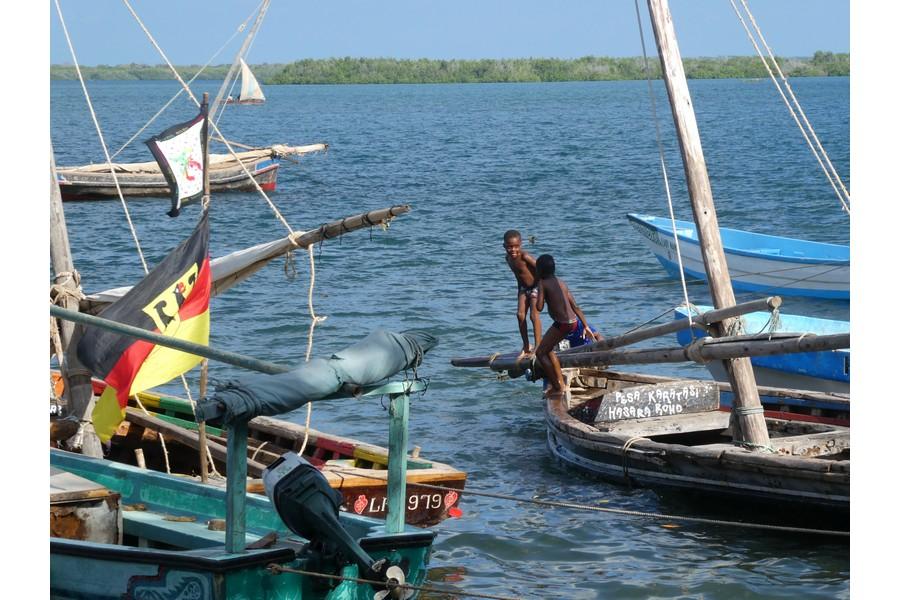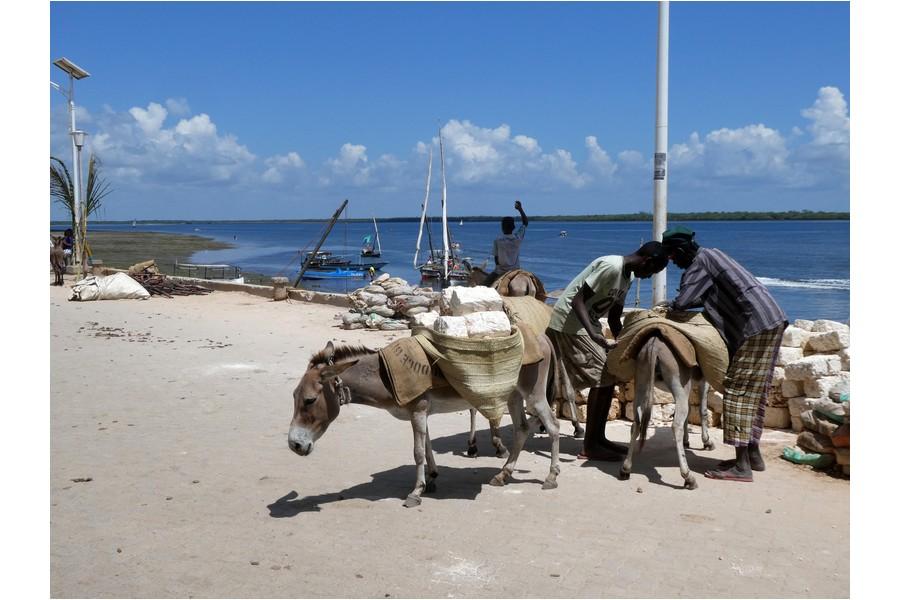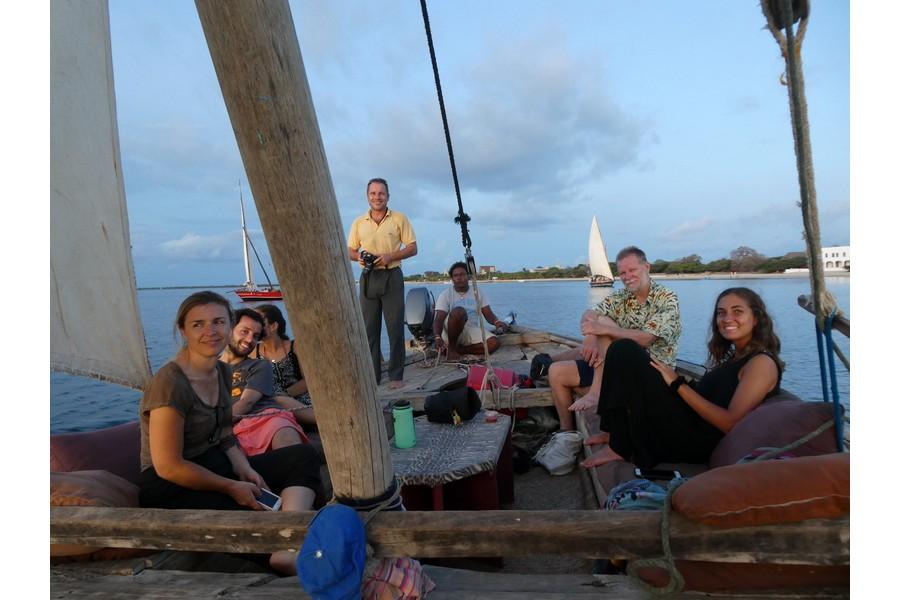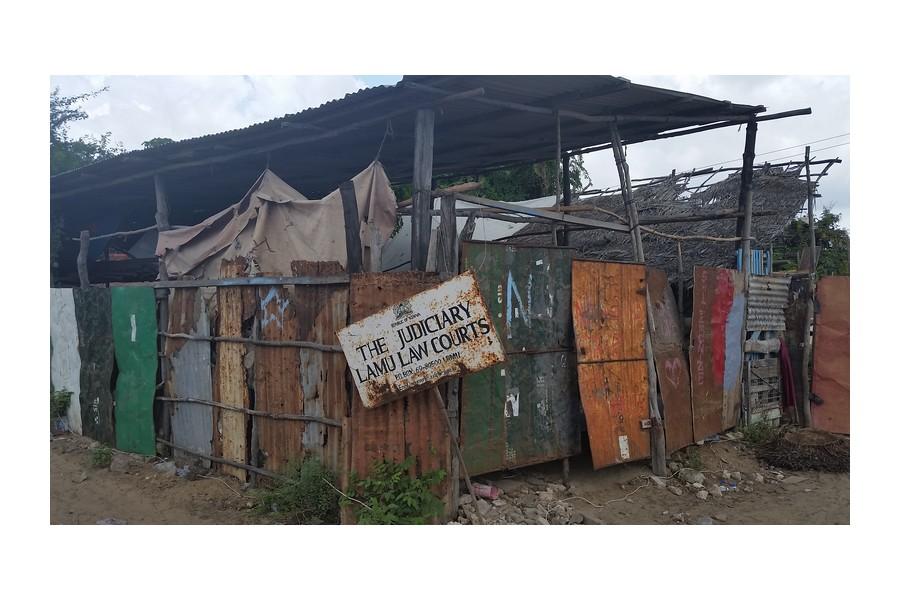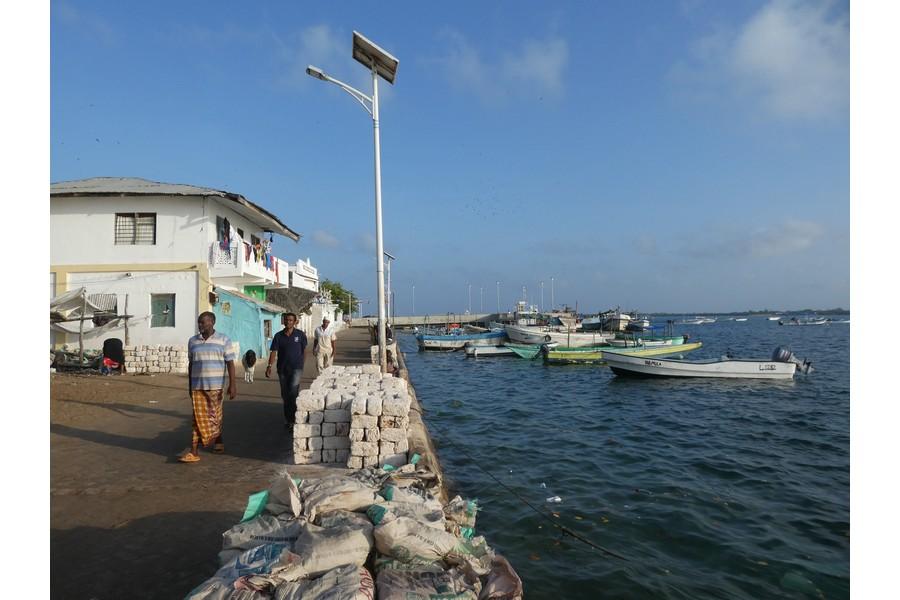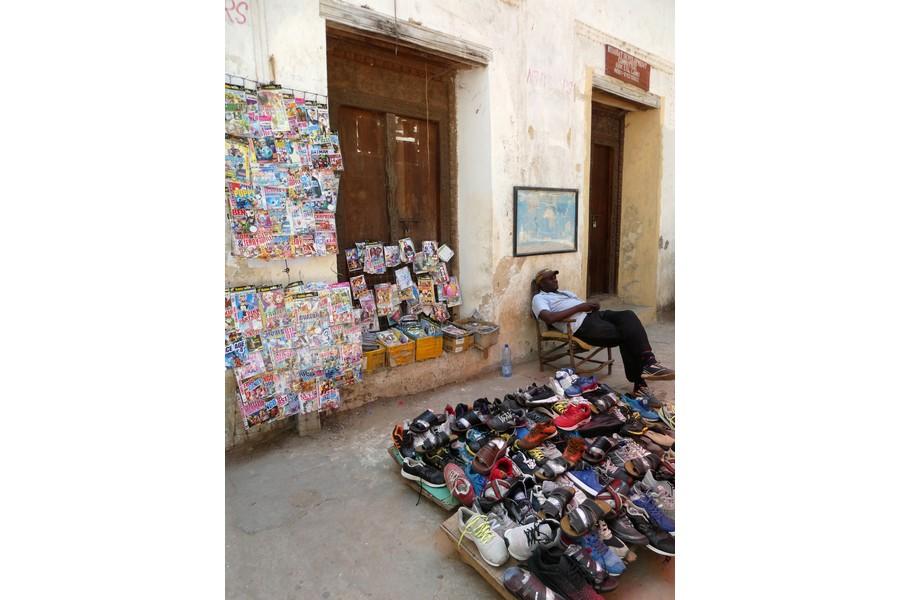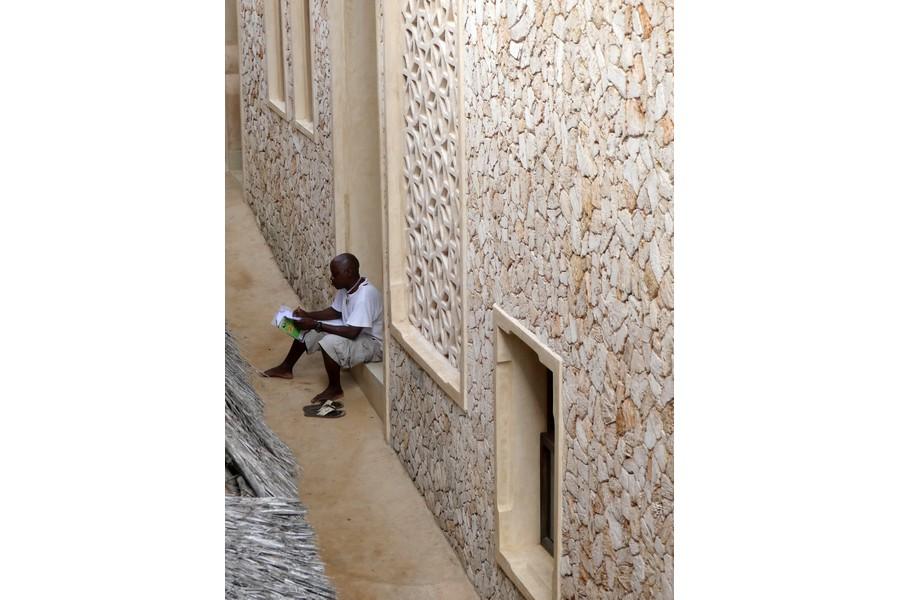Ah...Lamu
Country
To set the scene, we are relaxing in our room at the Shela Pwani Guest House, a lovely Swahili building directly overlooking Peponi Hotel, the most expensive accommodation on the island of Lamu. Our accommodation used to house royalty some 100 years ago and is decked out with carved plasterwork and bathrooms modelled to look like prayer walls in mosques. Our room is on the first floor directly below the airy roof terrace, the temperature is 33 degrees and the breeze is blowing directly over our double bed that is positioned to look out across the 1km stretch of water to Manda Island.
A small table is positioned behind the double bed and in lieu of dining on the roof terrace, we chose to enjoy an amazing home cooked meal of steamed vegetables in Swahili sauce in the comfort of our room. The manager, and fabulous in-house chef, had procured some apple ciders for us which we enjoyed following our late lunch. Whilst we both read or played on our computers, we watch the Mozambique and Lamu dhows sail by and boat captains transporting passengers between Shela and Lamu Old Town, and are thankful we decided to spend 18 days in the Lamu Archipelago of Kenya.
Twelve days ago, our small plane from Nairobi landed on the airstrip on Manda Island, a short boat ride from 2001 UNESCO World Heritage listed Lamu Old Town. We were escorted to Jambo House which is budget accommodation owned by Arnold, a German fellow who visited Lamu 10 years ago, fell in love with the place, and purchased an old Swahili building complete with rooftop terrace. Arnold, a world traveller himself, knows exactly what travellers need right down to providing his own street map of Lamu Town noting the best budget restaurants and street food vendors, where to get the best exchange rate for your dollar, where to see a beautiful sunrise and/or sunset, and offers his database of tried and trusted service providers for your benefit.
Lamu Old Town is the oldest and best-preserved Swahili settlement in East Africa. Built in coral stone and mangrove timber, the town is characterized by narrow alleyways and footpaths, residents and visitors move about on foot or by boat, and donkeys are used to transport goods and materials.
Lamu has hosted major Muslim religious festivals including the annual Maulid Festival since the 19th century, and has become a significant centre for the study of Islamic and Swahili cultures.
We arrived on the final day of the Maulid Festival and were privy to the huge procession of men along the Seafront on their way to pay homage to a special tomb in the island cemetery. It was a grand event with locals and visitors alike flooding the town for this auspicious annual event.
Tourism marketing explains “To visit Lamu is to enter another world, and the visitor finds themselves becoming a part of this world. Life slows down, and long days are spent strolling along the waterfront, exploring the town and museums or relaxing on the beaches.” I guess this pretty much sums up the twelve days since we arrived!
At low tide it is a leisurely 45 minutes’ walk along the seafront from Lamu Old Town to Shela, During our seven days exploring hot and humid Lamu Town, we strolled to Shela and discovered high end hotels, restaurants, and a beautiful white sandy beach that stretches as far as the eye can see. But most importantly, we discovered a continual breeze that was cool and fresh! We inspected quite a few hotels and guest houses before walking into Shela Pwani Guest House and being shown a long narrow room where the bed was about to launch you into the sparking blue water save for the palm trees swaying directly in front! We knew we had found "our" room!
Following a dhow cruise through the Manda Island mangroves to the ruins of the 16th century Swahili settlement of Takwa, three of us decided we would like to swim from Manda Island across the channel to Shela. Without my sports watch I can only guess the water temperature to be around 25-26 degrees. The water was clean and clear and with Captain Kelly manoeuvring his Mozambique dhow to fend off any other marine vessels from running us over, we had a fabulous swim to the white sandy shore of Shela. I was hooked and now needed to work out how to do this on a regular basis.
One morning we saw two swimmers in the distance being accompanied across the channel by the boat “Cappuccino”. Later that day, we met Captain Cappuccino and engaged his services to meet Dale and I the following morning so that I could swim from Shela to Manda and return, with Dale on board. The two swimmers from the previous day had left the island, however I saw two different men carrying swimming goggles and asked if they wanted to join me in the return swim. Suddenly we were a pose of three!
Since then, we have encouraged anyone carrying a pair of swimming goggles to join us and we have made a regular booking with Captain Cappuccino to fend off the odd fishing boat and dhow. One cautious but keen fellow this morning liked the idea of the boat as a safety net, saying he wasn’t sure he could make the distance one way. He stayed on the boat to Manda, then swam the whole way back. He was so happy with his achievement, that he gave me a kiss and almost danced his way off into the distance… We continued to do this, short of 2km, return swim each morning and already the man who sells fresh cockles on the beach recognises Dale and I in the street, and one morning I told a boat load of inquisitive local lads on a passing dhow who enquired, that we were in training to represent Lamu at the next Olympics. No sharks, no crocs, no stingers, and all good healthy fun…
One observation we have made since being on the island is that there are a lot of small motorcycles honking their way along Lamu Town seafront and there seems quite a high’ish level of westernisation in the town. This we weren’t expecting. I did some research and it seems anything other than donkeys, boats and dhows, and tourist shops along the sea front, are in direct violation of UNESCO requirements. Lamu Old Town was listed by UNESCO in recognition of its efforts to preserve Swahili culture and heritage. Please, Lamu, don’t fall into the westernisation trap and risk de-listing!
We’re not finished with Lamu yet. We are here until Christmas Day. We know already that we will be dragging our feet when the time comes to depart!





